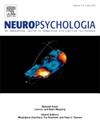Conflict resolution and response inhibition: A simultaneous EEG-EMG-pupillometry study
IF 2
3区 心理学
Q3 BEHAVIORAL SCIENCES
引用次数: 0
Abstract
Inhibition in cognitive control has many implications. Behaviorally, the stop signal task is supposedly capturing inhibition of already initiated responses (response inhibition). In contrast, the flanker paradigm supposedly captures the inhibition of several competing responses (competitive inhibition). As the neural mechanisms for these behavioral phenomena are not clear, it begs the question of whether both response inhibition and competitive inhibition draw from a similar inhibitory resource pool and to what extent they might interact.
In the current study, the potential interplay between inhibitory mechanisms was investigated in a combined stop-signal flanker task where (in-)congruent flankers were occasionally followed by stop signals. A multimodal task-setup was implemented allowing for examination of behavior, electromyography (EMG), electroencephalography (EEG), and pupillometry to assess different inhibition-related outcome measures.
Estimates of response inhibition speed (stop-signal reaction times; SSRTs) indicated an interaction with competitive inhibition, where stopping was faster in incongruent compared to congruent stop conditions. However, this was likely driven by differences at the short stop signal delays, which are susceptible to horse race model violations. Moreover, this interaction was not evident in physiological measures: neither stop-related EMG, EEG nor pupillometry measures showed such congruency modulations. Exploratory analyses showed that a larger pupillometry congruency effect was negatively associated with the congruency effect in SSRTs, suggesting that pupil dilation as a proxy for NE-LC activity might be linked to increased allocation of cognitive control. Taken together, our results do not provide clear evidence for an interaction between response inhibition and competitive inhibition.
冲突解决和反应抑制:同时进行的脑电图-肌电-瞳孔测量研究。
认知控制中的抑制有许多意义。从行为上讲,停止信号任务应该是捕获已经启动的反应的抑制(反应抑制)。相反,侧卫范式被认为捕获了几种竞争反应的抑制(竞争性抑制)。由于这些行为现象的神经机制尚不清楚,这就引出了一个问题,即反应性抑制和竞争性抑制是否来自类似的抑制资源池,以及它们在多大程度上可能相互作用。在当前的研究中,在一个联合的停止-信号侧翼任务中,研究了抑制机制之间潜在的相互作用,其中(不)一致的侧翼任务偶尔会跟随停止信号。实施多模式任务设置,允许检查行为,肌电图(EMG),脑电图(EEG)和瞳孔测量来评估不同的抑制相关结果测量。估计反应抑制速度(停止信号反应时间;SSRTs)显示了竞争性抑制的相互作用,在不一致的条件下比在一致的条件下更快地停止。然而,这可能是由于短时停车信号延迟的差异造成的,这很容易受到赛马模型违规的影响。此外,这种相互作用在生理测量中并不明显:停止相关的肌电图、脑电图和瞳孔测量都没有显示出这种一致性调节。探索性分析显示,在SSRTs中,更大的瞳孔一致性效应与一致性效应呈负相关,这表明瞳孔扩张作为NE-LC活动的代理可能与认知控制分配的增加有关。综上所述,我们的结果并没有为反应抑制和竞争抑制之间的相互作用提供明确的证据。
本文章由计算机程序翻译,如有差异,请以英文原文为准。
求助全文
约1分钟内获得全文
求助全文
来源期刊

Neuropsychologia
医学-行为科学
CiteScore
5.10
自引率
3.80%
发文量
228
审稿时长
4 months
期刊介绍:
Neuropsychologia is an international interdisciplinary journal devoted to experimental and theoretical contributions that advance understanding of human cognition and behavior from a neuroscience perspective. The journal will consider for publication studies that link brain function with cognitive processes, including attention and awareness, action and motor control, executive functions and cognitive control, memory, language, and emotion and social cognition.
 求助内容:
求助内容: 应助结果提醒方式:
应助结果提醒方式:


